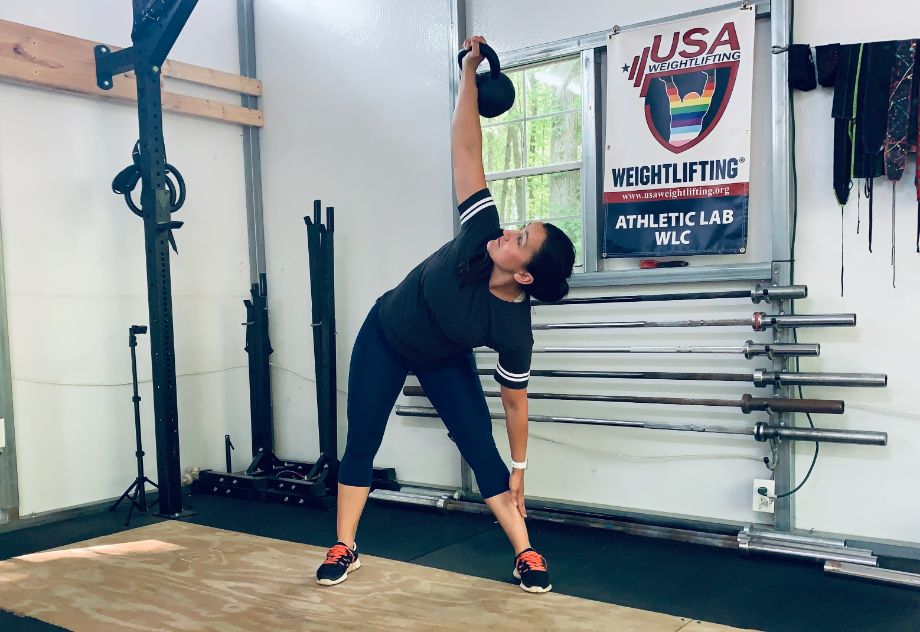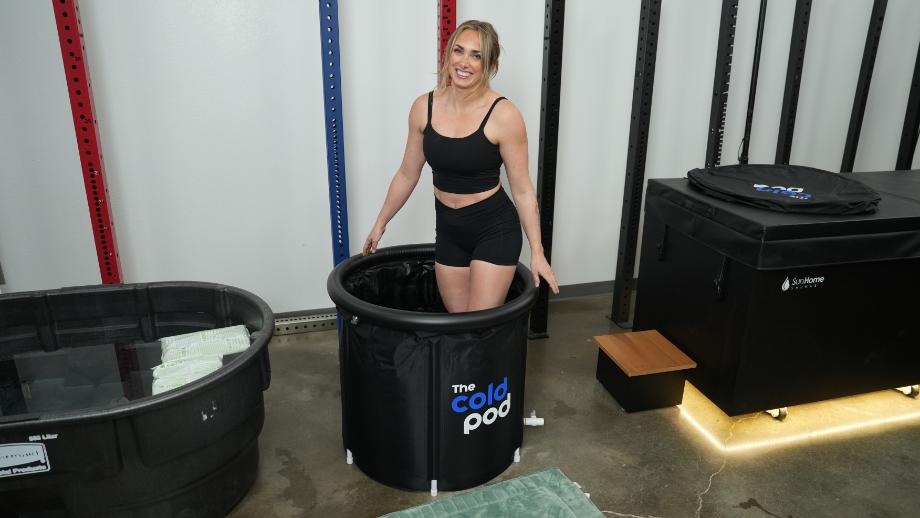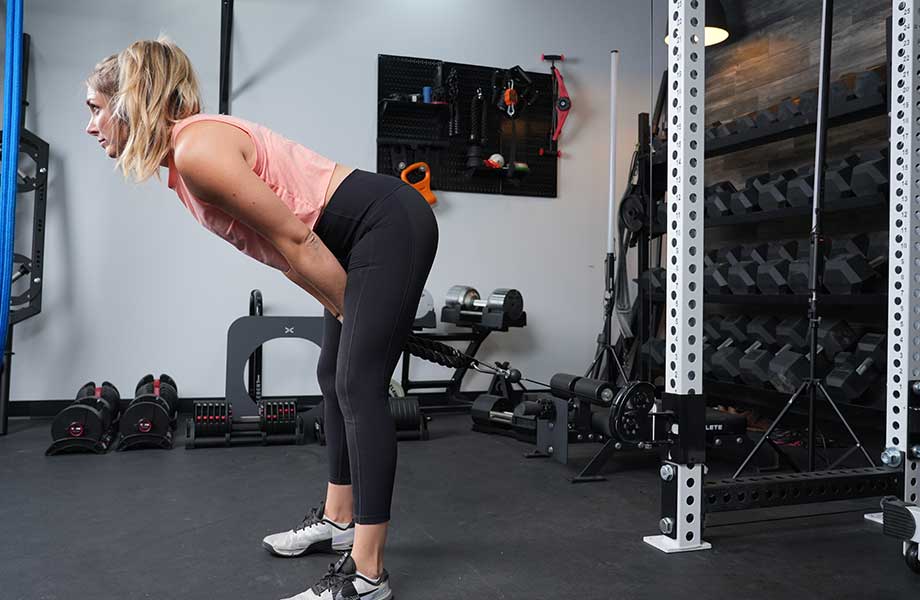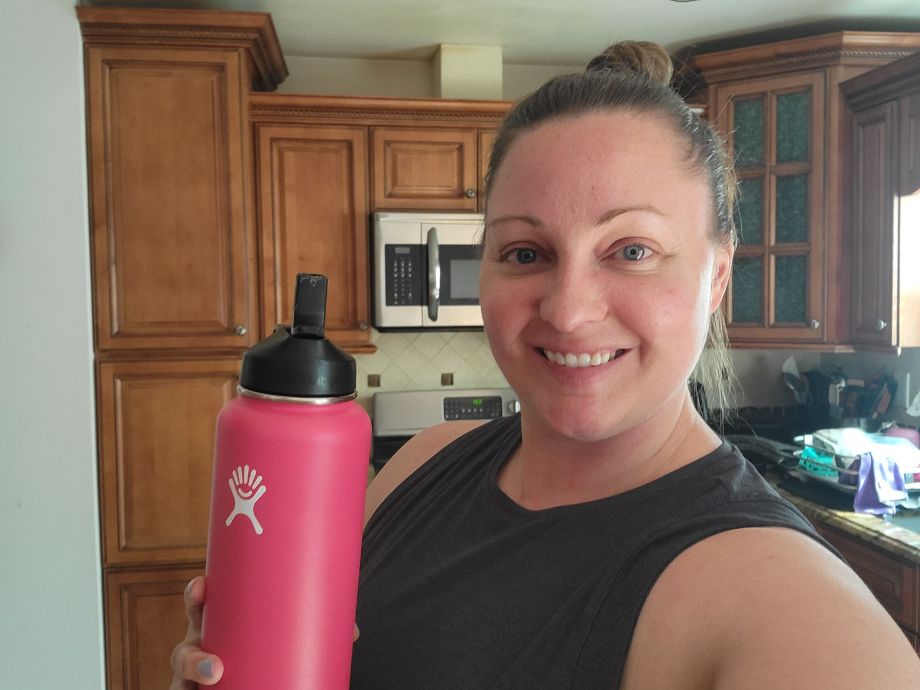Do you fancy yourself a fitness aficionado?
Many of us have walked the straight and narrow for years, decades even, and tried all sorts of exercises from deadlifts to dead hangs, box jumps to jump squats, bench press to push presses—you’ve done ‘em all.
But have you ever tried a kettlebell windmill before?
Some of you are nodding your heads, while others are scratching them. Walk into any gym in the country and you’re sure to see squats, deadlifts, and bench presses, sit-ups, push-ups, and pull-ups, but would you see this move? Probably not often.
That’s why your mission, choose you accept it, is to set the trend. The kettlebell windmill is significantly less popular than many other gym staple exercises, but that doesn’t make it any less amazing and potentially one of the best ab exercises for building strong abdominal muscles and cultivating incredible core stability.
We’re going to tell you what it is, how to do it, and why to do it.
Sound like a plan? Let’s get it!
How To Do A Kettlebell Windmill
- Stand with your feet shoulder-width apart holding a kettlebell in your right hand.
- Extend your arm overhead and slowly pivot your left foot outward at a 45-degree angle.
- Shift your weight onto your left foot, keeping your right arm raised.
- Keeping your eyes forward and down toward the floor. Slide your left hand down your left leg as you descend.
- Once you touch the floor with your left hand, or reach the lowest point your mobility allows, pause briefly, then slowly rise back to the starting position.
- Repeat as needed, then switch sides and repeat the full set.
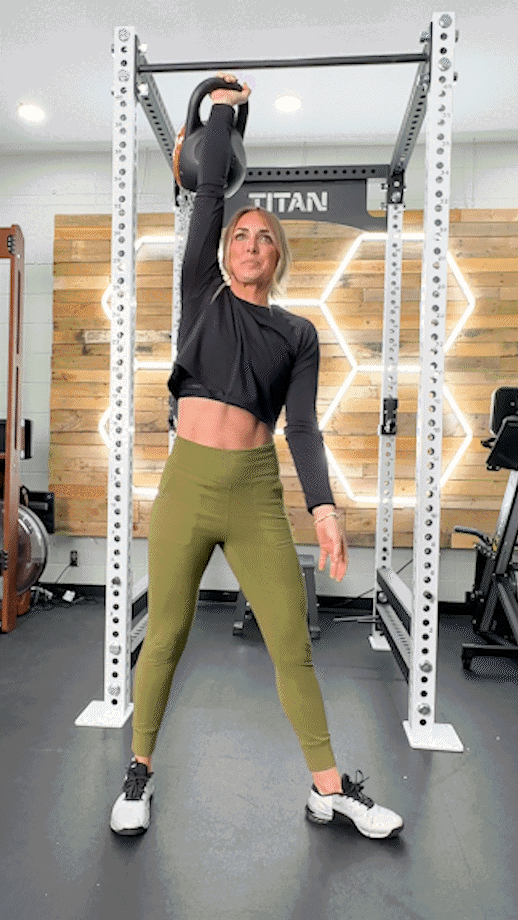
Trainer Tips for Form
Unlike the various high-octane exercises that have you blasting out the reps, the kettlebell windmill is slow, deliberate, and controlled, kind of like the Turkish get-up.
Here are some trainer tips to help you perform kettlebell windmills with proper form.
Work On Flexibility and Mobility
Performing a set of kettlebell windmills requires you to call upon your inner Chubby Checker and do the twist. That means you’ll need to be loose and limber, specifically in the hips, hamstrings, and lower back, to achieve a full range of motion and perform this exercise.
Start out each session with a dynamic warm-up and finish things up with some static stretches to get some length in the involved muscle groups. Foam rolling is beneficial as well.
Yoga is also very effective in improving flexibility, mobility, and stability. Pigeon pose, cobra pose, and seated forward fold are among of the best mobility exercises to practice, as they lengthen key areas like the lower back and legs while improving hip mobility, too.
“Working to improve your flexibility and mobility not only helps you get in and out of that trademark windmill position more easily, it’s also the best way of reducing your risk of injury,” says Kate Meier, certified personal trainer and head of content at Garage Gym Reviews.
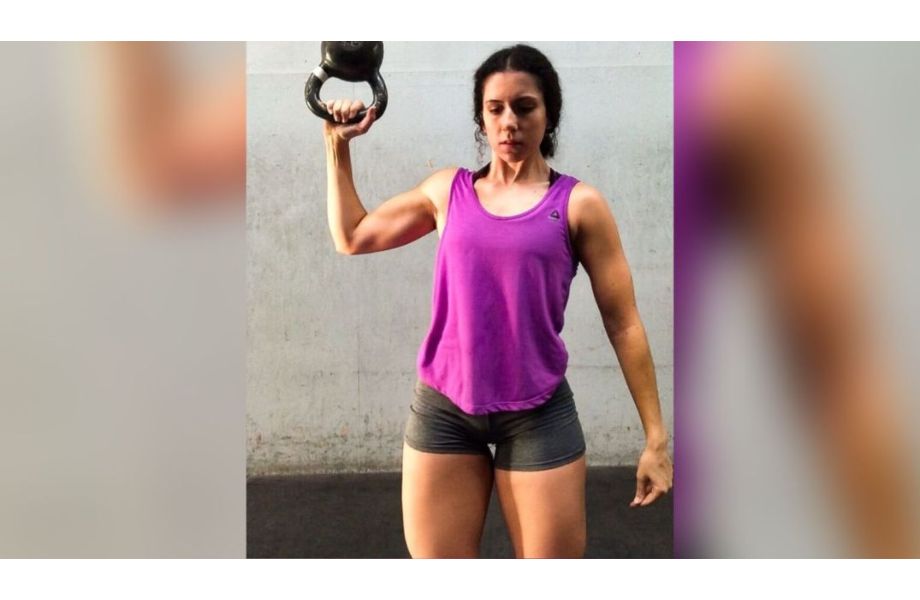
Practice the Movement Weight-Free
The kettlebell windmill is not an overly complicated movement, but there are some clear advantages associated with rehearsing it weight-free or with a light kettlebell before truly testing your mettle.
“Practicing the kettlebell windmill weight-free is the best way to get acquainted with the movement pattern,” Kate says. “This way, you get used to the movement without having to worry about holding a heavy kettlebell up as you learn.”
Not only is it easier for learning the mechanics of the exercise, it also reduces your risk of injury.
Without the weight overhead, you can freely twist and contort your upper body, provided you do it slowly and listen to your body’s cues. Add in the weight of the kettlebell, and now there’s a real risk of pulling a muscle or experiencing strain if you take things too far.
Once you’re familiar with the movement and the range of motion your body finds comfortable, feel free to add that weight in and progress gradually as you do with any other exercise.
Try It With a Dumbbell First
Kettlebell training is often intimidating for beginners because of the kettlebell’s unique shape and weight distribution. That’s why, after learning the movement pattern weight-free, a good next step is to grab a dumbbell instead.
The best dumbbells feature an even weight distribution, making them slightly easier to manage and much more approachable for newbies. Using a free weight that you’re familiar and confident with will only help when it comes to building comfort and fluidity with this unusual exercise.
RELATED: 12 of the Most Underrated Dumbbell Exercises
Common Kettlebell Windmill Mistakes
Following our cues and tips will help you learn this move in no time, but there are a few common mistakes you should keep an eye out for as you progress.
Rounding the Shoulders
You’re sliding your free hand down the bent knee of your front leg, reaching for the floor, but this movement is seriously hard when you add in the weight!
You don’t even realize it but, before you know it, your shoulders have crept up to your ears and you’re scrunching your neck to stabilize the kettlebell. No bueno.
Rounding the shoulders is a common mistake, but it’s important to keep them down and back to avoid unnecessary stress on the neck. To correct, engage the shoulder blades by pinching them together. This will support and stabilize the movement while encouraging proper alignment.
Flexing or Extending the Spine
The kettlebell windmill involves twists and turns up top, but, through it all, you must maintain a flat back and neutral spine. Engaging your core muscles will help provide stability and protect your back from excessive flexion or extension.
If you’re having trouble keeping your back straight and core tight as you move through the motion, try working with a lighter weight or practicing weight-free to build the required muscle groups first.
Losing proper alignment because you’re lifting too much will only increase the strain on your back and put you at risk for pain, strains, and other nasty injuries.
Limited Rotation in the Shoulder
Ideally, you want your shoulders to rotate enough to reach the kettlebell overhead and maintain proper form throughout the kettlebell windmill movements.
If you can’t achieve a full shoulder rotation, you’ll reduce the overall effectiveness of the exercise and risk straining or injuring yourself.
Try incorporating shoulder mobility exercises, including shoulder dislocations, band pull-aparts, and overhead presses with light weights, into your warm-up to help facilitate movement in the shoulder joint.
Stretching exercises like the sleeper stretch and the doorway stretch are also useful.
Limiting the Hip Hinge
The hip hinge helps create a stable base that encourages proper form and alignment as you rotate during the kettlebell windmill. Limiting the hip hinge puts unnecessary stress on your lower back and reduces the activation of posterior chain muscles like your glutes and hamstrings.
If you’re having trouble with the hip hinge, try adding a few exercises to your routine that will help you practice the movement and support improved hip mobility. Squats and deadlifts are two all-purpose exercises that utilize a hip hinge, while kettlebell swings require an explosive hip hinge that will increase power in this key area.
Support your success with exercises and movements like these, then make sure to focus on keeping your back straight and hinging at the hips as you work to learn the kettlebell windmill.
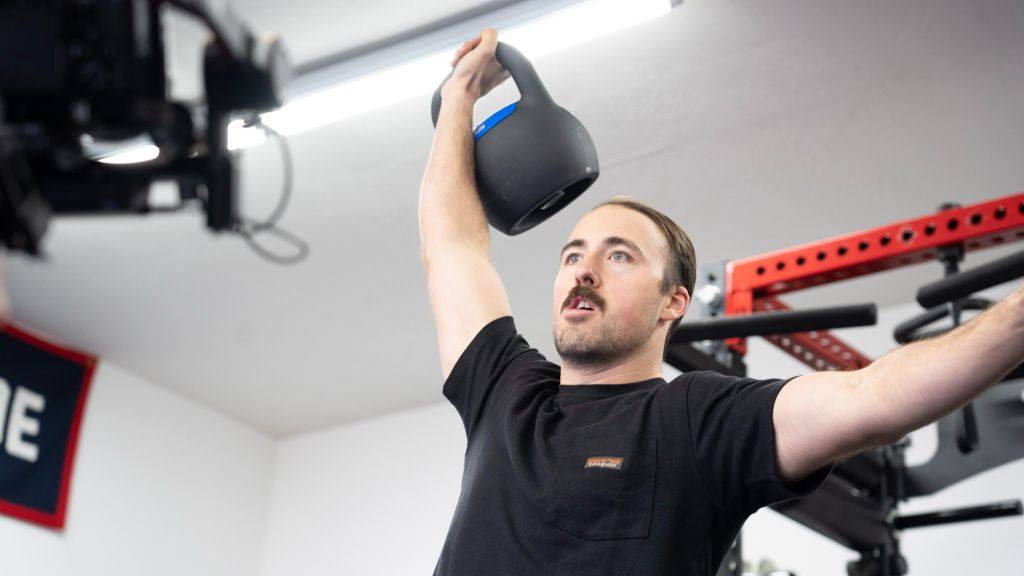
Feet Shifting or Lifting From Ground
We’re not doing box jumps here; the kettlebell windmill relies on having a firm base, so you want those feet planted from start to finish throughout the movement.
If you find your feet shifting or coming up, it could mean you’re losing tension in the core, you’re leaning too far forward or backward, or that the kettlebell weight you’ve chosen is simply too heavy for your current fitness level.
Try practicing in front of a mirror so you can check in with your form throughout the movement. Working with a qualified fitness professional like a coach or personal trainer also is helpful in finding and correcting faults in your form.
Kettlebell Windmill Variations
Learning the kettlebell windmill helps you add one of the best kettlebell exercises into your workout routine.
Here are a few alternatives and variations that will help support your success, and subsequently build on it, too!
Bodyweight Windmill
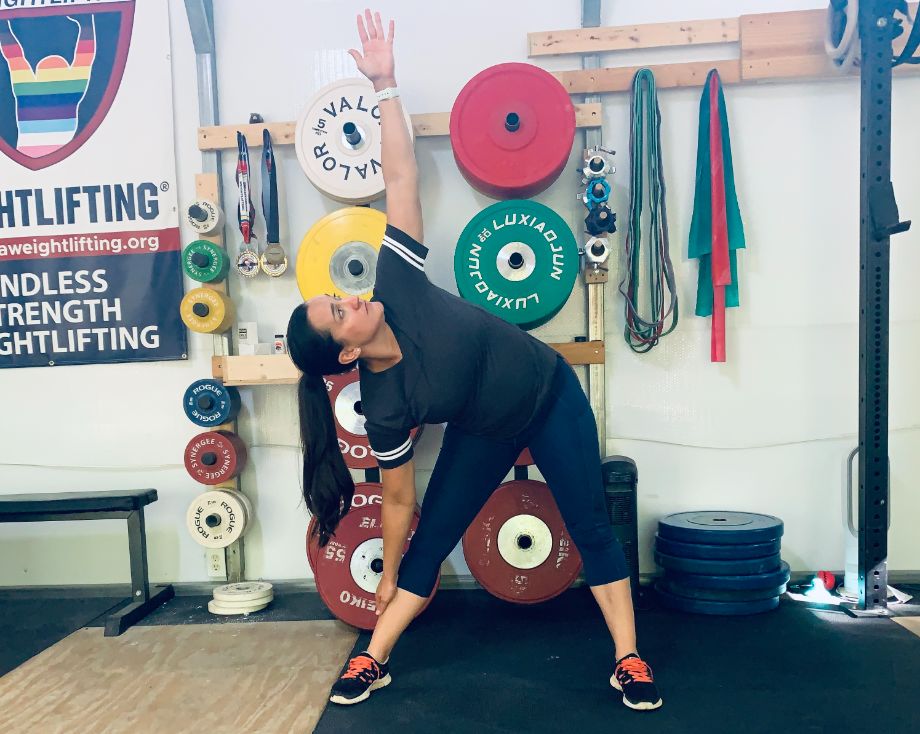
One of the things that makes it challenging to learn the kettlebell windmill exercise is the movement pattern itself. It involves bending, twisting, hinging—it’s a lot to keep track of!
Taking the kettlebell out of the equation and focusing first on the form and movements will work wonders for your fitness. The bodyweight windmill is an excellent tool for gaining comfort and proficiency on the movements that will directly translate to success on the kettlebell windmill later on.
To perform the bodyweight windmill, simply follow our steps above for the kettlebell windmill, but leave out the kettlebell.
RELATED: Try These 6 Challenging Bodyweight Workouts
Dumbbell Windmill
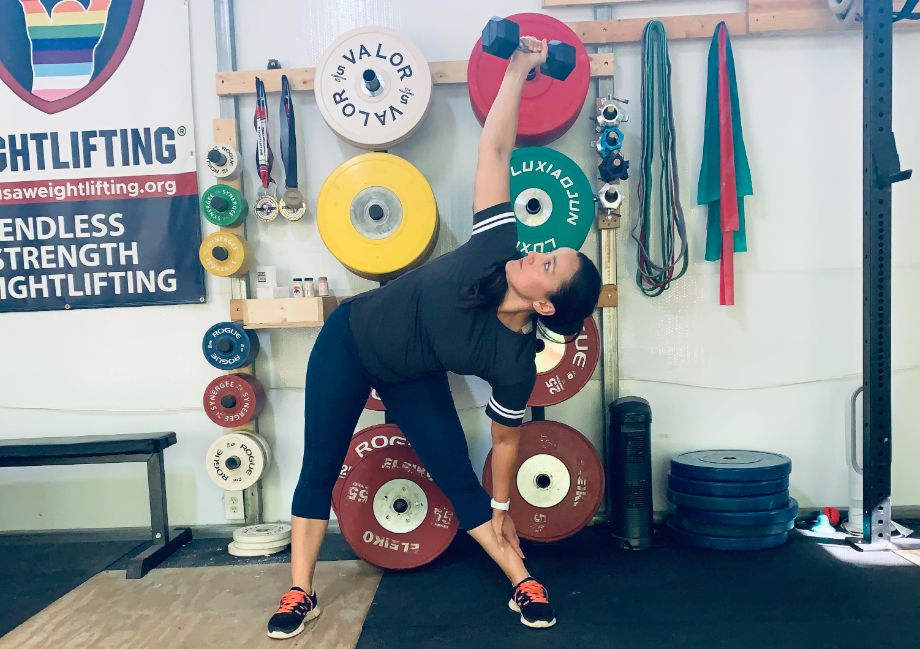
The dumbbell vs kettlebell debate is a hot one, and you can make arguments either way for which implement is better. In this case, swapping the kettlebell for a dumbbell also helps with learning the windmill exercise, as the weight distribution of the dumbbell is often easier for beginners to manage.
The dumbbell windmill is not only a great way to build a foundation for the kettlebell windmill, it’s also an excellent alternative when you’re looking to slightly change the stimulus and keep things fresh in your workout routine.
To perform the dumbbell windmill with proper form, follow the steps above for the kettlebell windmill, but trade the kettlebell for a dumbbell instead.
Half-Kneeling Kettlebell Windmill
Are you looking for something a little more challenging?
Half-kneeling kettlebell windmills are an interesting variation. The half-kneeling position challenges your stability and balance, forcing you to recruit the involved muscle groups to a greater degree to maintain proper form and alignment. It’s a great progression if you’ve already mastered the standard standing version of the windmill exercise.
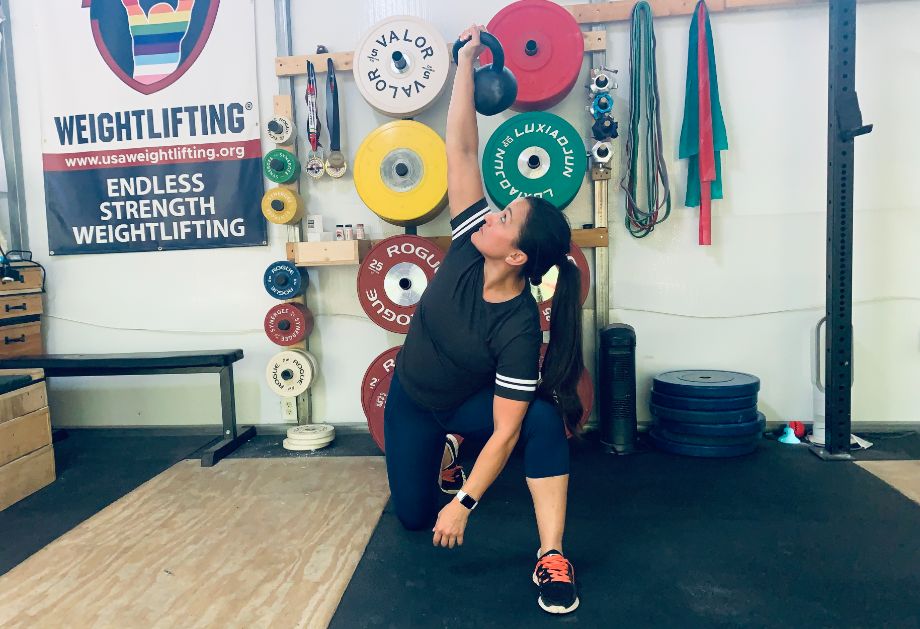
Here’s how to perform a half-kneeling kettlebell windmill with good form:
- Begin in a half-kneeling position with one knee on the ground and the other foot planted firmly on the ground.
- Hold a kettlebell in the hand opposite of the planted foot, with your arm extended overhead.
- Hinge at the hips and lower your torso to the side opposite of the weighted hand while maintaining a straight spine.
- Rotate your torso towards the ground, keeping your gaze fixed on the kettlebell.
- Pause at the bottom of the movement, then return to the starting position.
- Repeat for the desired number of repetitions, then switch sides and repeat on the opposite side.
As with other variations of the windmill exercise, keep a flat back, avoid overextending or flexing the spine, and focus on rotating from the shoulders and hips. Starting with a lighter weight when starting out is always a good idea too.
Useful Kettlebell Windmill Accessories
Want a little assistance? These tools could help.
Yoga Block
Our yogis already know how useful yoga blocks can be when you’re working to improve your flexibility but not quite there yet.
Plopping down a yoga block at your feet during the windmill exercise shortens the range of motion if you’re not physically able to touch the floor with your hand just yet. They provide stability and support so you can keep your balance while focusing on engaging all the target muscle groups during the exercise.
If you’re almost able to touch the floor, placing a yoga block down flat will give you just a little help, whereas stacking two or placing one block down vertically will provide even more assistance if that’s what you need.
As you improve flexibility and mobility, you can eventually remove the yoga block and enjoy your new increased range of motion thanks to your hard work and dedication. Great job, you!
FAQs: Kettlebell Windmill
What muscles does the kettlebell windmill work?
The kettlebell windmill is a multi-joint, multi-plane exercise that targets many muscles groups, including:
Core muscles: The windmill exercise engages abdominal muscles including the rectus abdominis, obliques, and erector spinae.
Shoulders: You’ll need strong shoulder muscles, including the deltoids, rotator cuff muscles, and upper trapezius, to hold the kettlebell in an overhead position.
Hips: Lower body muscles, like the glutes, hamstrings, hip flexors, and adductors, make the hip hinge movement possible and facilitate the windmill motion.
Supporting muscles: Other muscles, including the lats, quadriceps, and calf muscles, work to stabilize the body during the movement too.
Considering the activation present in these muscle groups, it’s safe to say the kettlebell windmill is an excellent exercise for many purposes, including improving core strength, shoulder stability, hip mobility, and more.
What muscles do windmills stretch?
The windmill movement pattern features lengthening in various muscle groups.
Your hamstrings will receive the most stretch, as hinging forward at the hips and stretching your arm to the floor involves a similar movement to the classic toe touch stretch. The adductors in your inner thigh and hip flexors will get a stretch as well.
But that’s not all; you’ll get some stretching in your upper body too, like the latissimus dorsi of the upper back. Both reaching your arm overhead and stretching your other arm to the floor encourage stretching of the lat muscles.
Because of this, the kettlebell windmill is not only a great strength-building exercise, but an excellent stretch, too!
Do kettlebell windmills build muscle?
Absolutely.
To move through the range of motion and stabilize the kettlebell overhead, you need to hold tension in your core and activate your shoulders and hips. The kettlebell windmill, therefore, will predominantly work to increase muscle size and strength in these key areas.
Overall, the kettlebell windmill provides activation to various muscle groups, making it an underrated exercise to include in any strength training regimen


